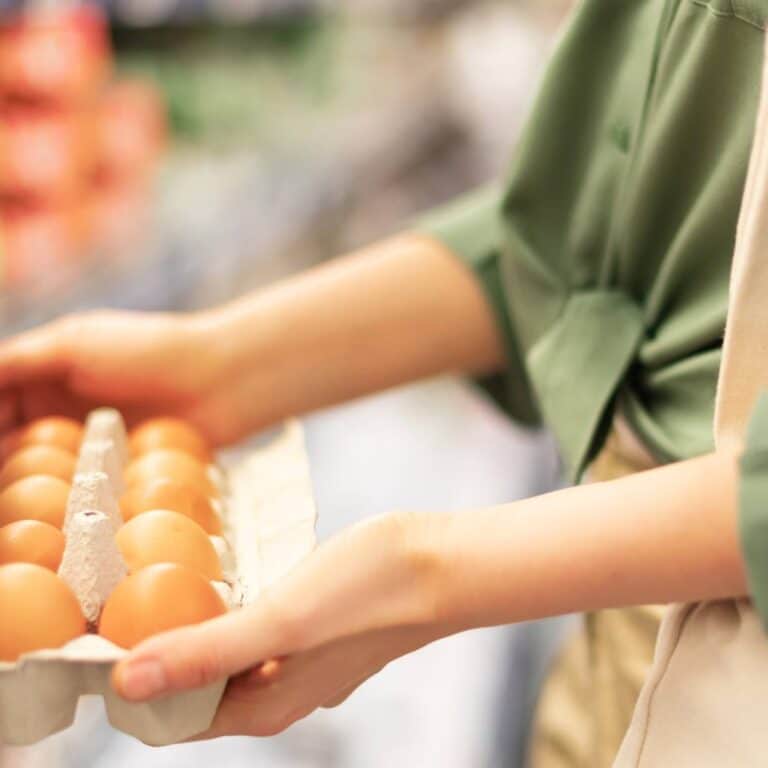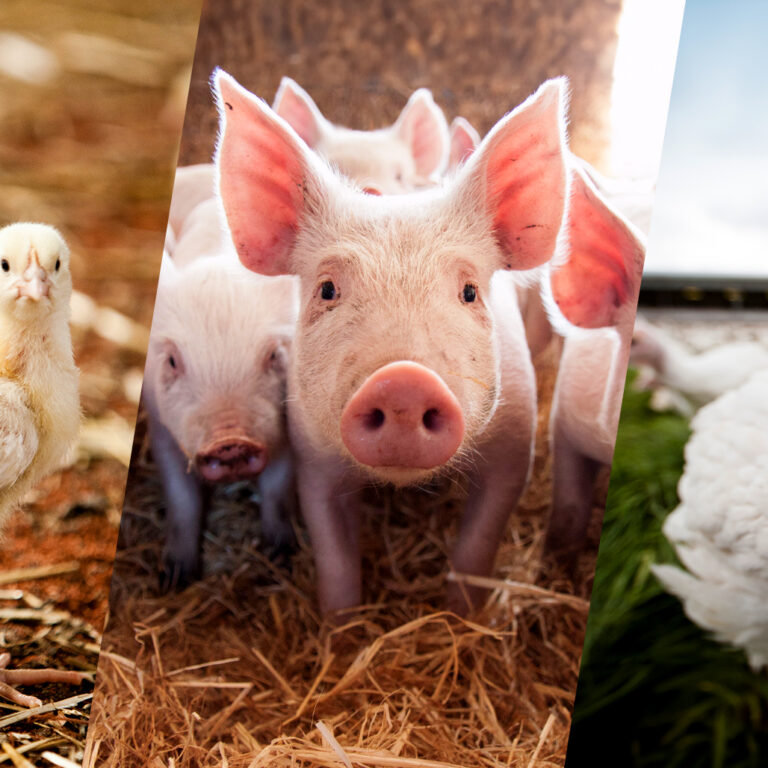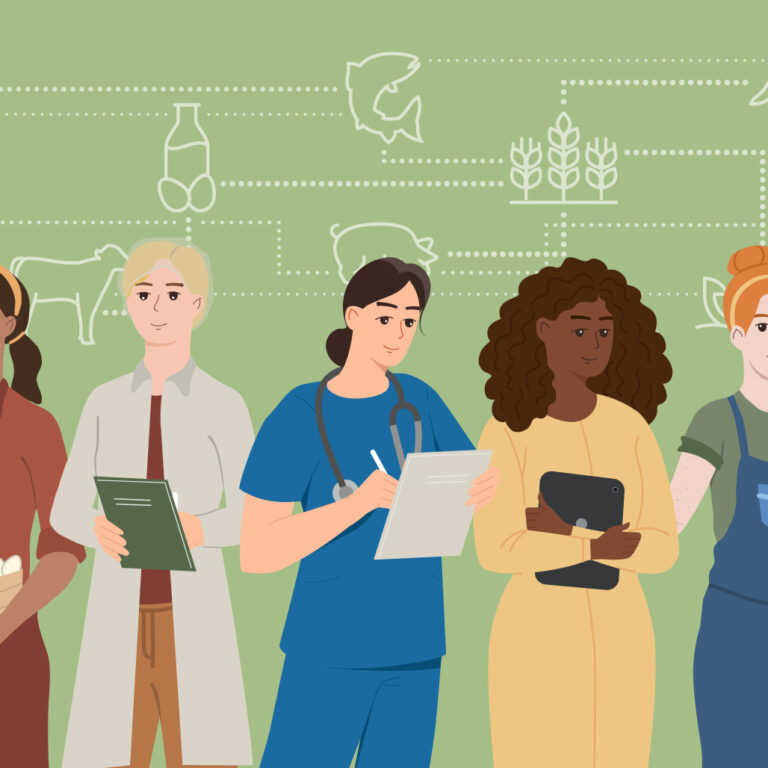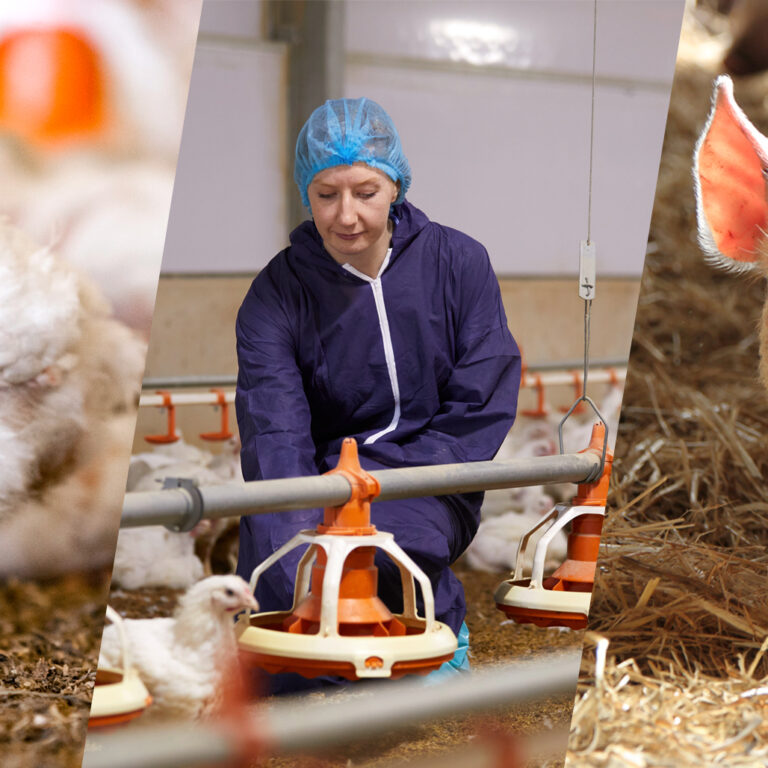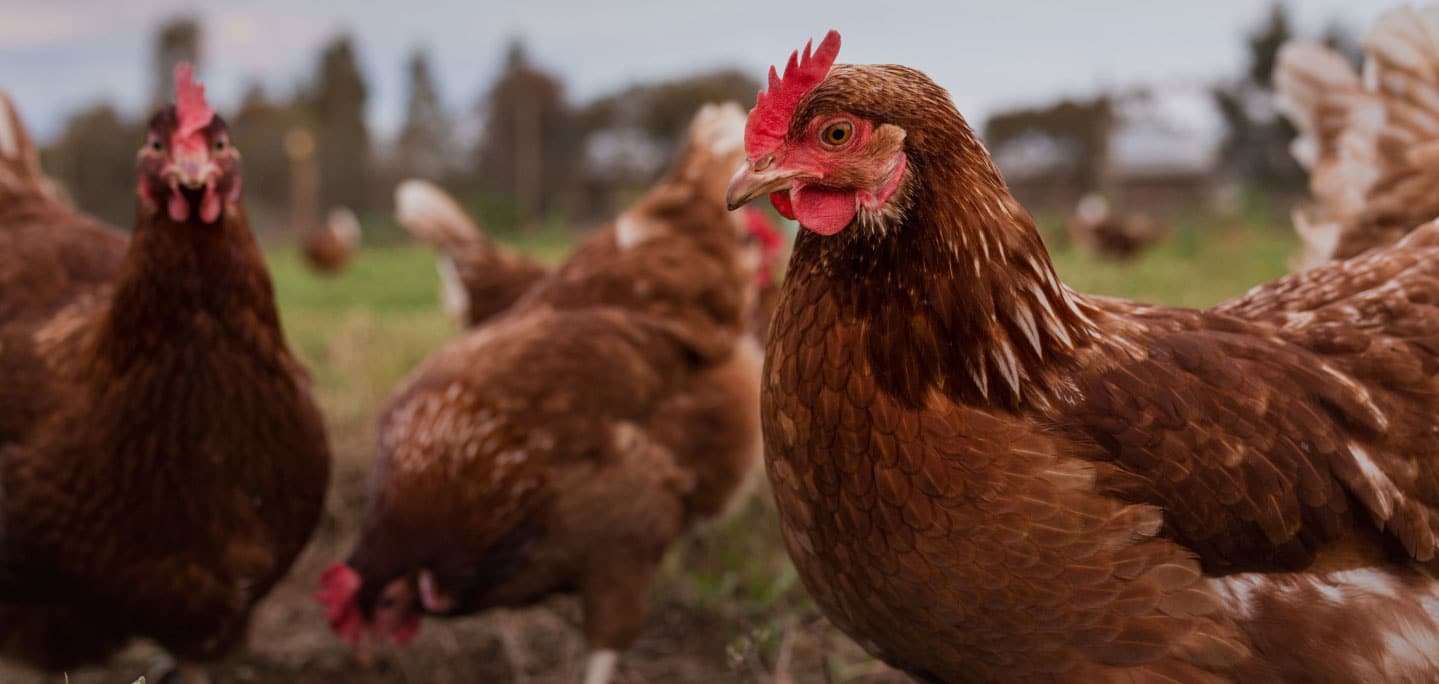Earlier this month we shared our tips for improving farm animal welfare in Australia, by making better shopping choices. Among these, was the advice to look closely at the packaging on the products you buy. So what labelling terms are credible when it comes to improving animal welfare, and what could be misleading? Read on to find out more.
Egg labelling
Across Australia, most eggs are labelled according to the type of farm production system i.e. cage eggs come from hens in cages, cage-free/barn laid eggs are from hens in enclosed sheds, and free range eggs come from hens with access to an outdoor range. It’s now a requirement that ‘free range’ egg labels stipulate the stocking density on the range, which can go up to 10,000 birds per hectare.
In Australia, over 10 million hens are still confined to barren battery cages. That’s over 70 per cent of the total number of layer hens in Australia. These hens live a life with no space to express their natural behaviours, standing on bare wire, and suffering detrimental health issues such as osteoporosis.
For hens to have a good life, they need the freedom to move and make choices about when and where to nest, stretch, flap their wings, perch and dust bathe – which they can’t do in a battery cage. Head to the RSPCA website for more information on how you can help get hens out of cages.
From the RSPCA’s perspective, good welfare can be achieved inside a barn. In fact, just as the stocking density outdoors impacts hen welfare, conditions inside the sheds for hens are just as (if not even more) important, as this is where birds will roost at night, and lay their eggs.
So which cage free or free range eggs should you buy? Look for independent, reputable certification, like RSPCA Approved eggs.
‘Hencoop’
We noticed some cage eggs labelled as ‘hencoop eggs’, which got us asking, what’s that? To many Aussies the image of a hencoop portrays a rather romantic, boutique life for hens. But don’t be fooled, these may have come from hens kept in cages, that have suffered throughout their entire lives. With millions of hens confined to cages in Australia – be mindful of other terms which may be used on eggs sourced from caged hens.
‘Enriched colony reared’
Egg buyers may see this term on egg cartons, which is referring to the use of enriched/furnished cages. This is a different cage system to a battery cage as they were developed to improve behavior expression in caged hens. Often they are labelled as enriched colony reared, which can sound like a higher welfare environment for hens.
Whilst these cages have some additional provisions to encourage greater behavioural expression, hens are still unable to express their full range of behaviours. This system does not offer a complete solution for improved hen welfare, so to be sure you’re avoiding cages, always look for ‘cage-free’.
Chicken meat labelling
‘Hormone free’
Whilst some farm animals in Australia are given hormones to promote growth, such as beef cattle and pigs, the chicken meat industry in Australia has not used hormones for decades. Many Aussies still think that the reason why chickens have fast growth rates is down to hormones, but it’s actually due to selective breeding.
As so many Aussies still have concerns about hormones in chicken meat, often these chicken products are labelled as ‘hormone free’ to quell concerns over their use. So whilst the claim is true, it is perpetrating a belief that hormones are used in this industry, and therefore increasing concerns where there shouldn’t be any.
‘Cage free’
Whilst millions of Aussie layer hens are still kept in cages, meat chickens in Australia have never been confined in this way. Layer hens and meat chickens are different types of birds that are kept for different purposes; eggs or meat.
It’s important to look for ‘cage-free’ when purchasing eggs, but just like the term ‘hormone free’ for meat chickens, cage chicken meat is a non-issue. Chickens raised for meat in Australia are usually raised in large sheds, and not in cages.
For meat chickens to live a good life, they need to have freedom to move and make choices about when and where to stretch, flap their wings, perch and dust bathe. They need to be encouraged to be active through enrichment and good lighting, as well as live in a comfortable environment that has dry litter floor covering. For more information on meat chickens head to the RSPCA website.
Pork labelling
‘Sow-stall free’
The Australian pig industry has voluntarily committed to phasing out sow stalls and moving all sows (female breeding pigs) to group housing during their pregnancies, a move that is strongly supported by the RSPCA. The term ‘sow-stall free’ is used to differentiate pork product that comes from pigs that have been born to sows in group housing.
This move is an important step to improving pig welfare in Australia and should be commended as an industry led initiative. However the next priority is transitioning away from farrowing crates, which may be used to confine sows for up to five weeks.
It’s important for Aussies to also consider the life of the pig when buying pork products. ‘Sow stall free’ gives information on how the sow was kept, but doesn’t detail anything on the conditions that the pig (the animal that was slaughtered for pork product) was kept in. Piglets from sow-stall free sows may be raised in large open sheds with straw bedding or in small barren pens on concrete or slatted floors as in conventional systems. In barren environments these pigs can suffer from boredom as they are unable to perform their natural behaviours of exploring and foraging. Because of this, pigs perform abnormal behaviours of tail biting, which is often managed by tail docking (cutting off the tails). For good welfare, pigs should be reared in an environment that satisfies their behavioural needs, meaning that routine husbandry procedures such as tail docking are not required.
‘Country of Origin labelling’
All fresh pork sold in Australia comes from pigs reared in Australia. However ‘small goods’ such as ham, bacon, and salami are largely made using imported pork. Many of the countries where this imported pork comes from have much lower standards than Australian pork producers.
For Aussies to be sure when buying their bacon that it’s come from an Australian producer they will need to look at the ‘country of origin labelling’. This is a green and gold mark, often with a Kangaroo, that has three different labelling types. Aussies should look closely at these labels to be sure that the pork has been grown in Australia, otherwise they could be unknowingly buying very low welfare pork that would not meet the same standards as even the minimum standards in Australia.
As standards can vary from farm to farm, and there is no regular compliance and monitoring at a federal level on animal welfare, for Australian consumers to have confidence that the product they buy comes from farms with a focus on animal welfare, they should look for a reputable third party certification, ideally from an organisation with detailed publicly available animal welfare standards.
Want more? How to shop this decade – vote for animal welfare with your wallet

